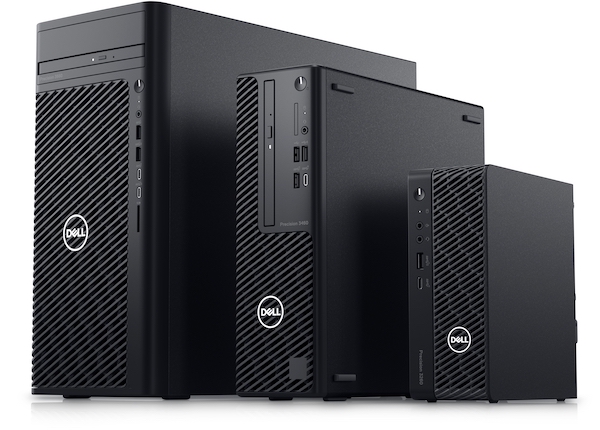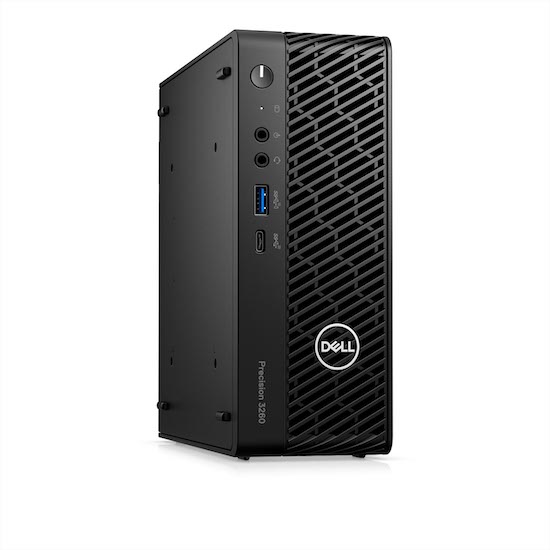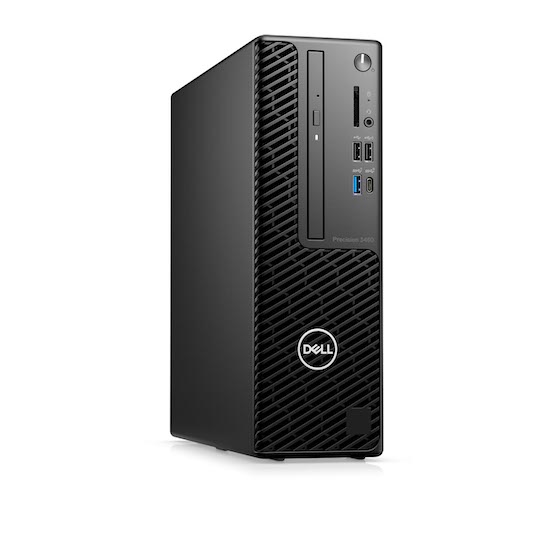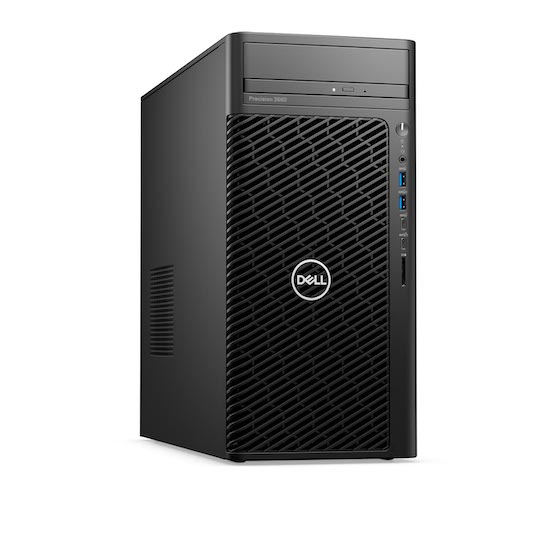
The Dell Precision 3660, 3460 and 3260 support the latest PCIe standards, NVIDIA RTX™ GPUs. Image courtesy of Dell.
April 21, 2022
Advancements in NVIDIA RTX™ GPU performance, processor capabilities, and the availability of hardware that supports PCIe Gen 4 for graphics and storage (enabling much higher bandwidth and performance) are giving design engineers better and more powerful options when it comes to professional workstations.
Early in 2022, Dell Technologies announced that its Dell Precision 3000 series desktop workstations have been upgraded to take advantage of all of those technologies. And while the 3000 line is considered the entry-level family in the Dell product family, the latest upgrades provide a significant amount of power for engineers doing CAD work, as well as simulation and rendering.
Dell announced the Precision 3260 Compact, Precision 3460 and Precision 3660 workstations in early Mach. Across the board, they all support 12th-generation Intel processors, which deliver higher core counts by introducing a combination of performance cores and efficiency cores, says Matt Allard, director of strategic alliances at Dell. These are useful for engineering workflows, because the CAD and visualization applications can run on the performance cores, while productivity apps are running on the efficiency cores. The benchmarks have been really encouraging so far, particularly on CPU-intensive activities.
More importantly, the new workstations also support the latest NVIDIA RTX™ GPUs, providing even more compute power for a wider range of workflows. Support for PCIe Gen 4 – the system bus that the processor GPU and storage communicate on – makes it easier to handle working with large CAD models and complex simulation tasks. PCIe Gen 4 offers up to 16 gigatransfers per second, double that of Gen 3.
“For things like virtual/augmented reality or large models, where you need fast interactivity, that acceleration matters,” Allard says. “It also means you can get the most out of the current-generation graphics cards.”
Compact Power

The Dell Precision 3260 Compact improves on the previous generation (3240) in several ways, including upgraded support for PCIe Gen 4. In addition, the computer supports the recently updated NVIDIA RTX™ A2000 GPU, which now supports up to 12GB of video RAM. “So this machine can be used for much more complex workloads than it was previously able to support,” Allard says.
The 3260 also offers Dell Optimizer technology and up to 64G of memory, in a 7.48 in. x 2.82 in. x 7 in. housing that weighs less than 5 lbs.

The 3460 has also been upgraded to support PCIe Gen 4 and up to the new NVIDIA RTX™ A2000 GPU. A bit larger than the 3260, it provides more expandability when it comes to storage.
Next-Generation Performance

According to Allard, the biggest change has come in the Precision 3660, which supports PCIe Gen 5 with an available slot for a full-length, double-height high-powered graphics card, which can allow bandwidth up to 128 GB/s. While NVIDIA recently introduced a next-generation data center GPU, there are no PCIe Gen 5 GPUs for workstations on the market – yet, Allard says. But it will only be a matter of time before Gen 5 workstation graphics cards are available, which will offer even greater performance improvements.
The 3660 supports up to the NVIDIA RTX™ A6000 GPU, up to 128G of memory, and much more space for expansion. The workstation is also designed so that it can support additional GPU upgrades in the future.
“When you look at the engineering market in general, most CAD applications are going to benefit from a lower core count and high clock speed processor, and a mid-range or above RTX™ GPU, so any one of these systems leveraging the NVIDIA RTX™ A2000 class card is a good mainstream CAD system for most users,” says Scott Hamilton, senior industry strategist at Dell. “For those looking for a bit more capability, the Precision 3660 really shines because you can get the higher end processors. If you are doing multi-threaded work like analysis or rendering, you can benefit from higher-end CPUs, and also take advantage of GPU acceleration for applications like Ansys Discovery.”
More Dell Coverage

More NVIDIA Coverage
Subscribe to our FREE magazine, FREE email newsletters or both!








